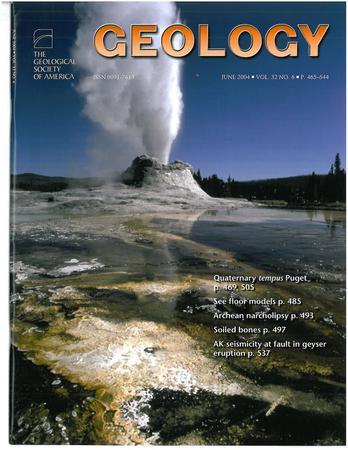Coesite discovered in Australasian microtektites
IF 4.6
1区 地球科学
Q1 GEOLOGY
引用次数: 0
Abstract
Microtektites are microscopic glass spherules produced by large impacts on Earth. Whether they formed as impact melt droplets or as condensates from a target-dominated vapor plume is debated. Combining optical, scanning, and transmission electron microscopy, we studied microscopic silica-rich inclusions in four Australasian microtektites to search for high-pressure phases produced by shock metamorphism in the precursor materials. Three microtektites are from deep-sea sediment cores close to the putative impact location in Southeast Asia, and one is from the Transantarctic Mountains at the extreme reaches of the strewn field. Inclusions in the oceanic microtektites consist of a few partially resorbed microscopic quartz and coesite grains set in a silica-rich glass matrix; the latter hosts a multitude of individual nanoscopic coesite relicts. The inclusion in the Antarctic microtektite consists of featureless silica-rich glass, is devoid of coesite, and shows diffusive boundaries. Coesite grains in the deep-sea microtektites are interpreted as impact-melted relicts of larger crystals originally formed during shock metamorphism in a quartz-rich target precursor. The presence of coesite in deep-sea microtektites strengthens the argument that Australasian microtektites found closest to the impact location originated as impact melt spherules upon compression-decompression melting during impact cratering and not as target vapor plume condensates. The high degree of digestion of the inclusion in the Antarctic microtektite is in line with the view that the most distal Australasian microtektites experienced the highest thermal regimes.在澳大拉西亚微晶岩中发现的钴矿
微陨石是由地球上的大撞击产生的微小玻璃球体。它们是作为撞击熔体液滴形成的,还是作为以目标为主导的蒸汽羽状物形成的冷凝物形成的,目前还存在争议。结合光学、扫描和透射电子显微镜,我们研究了四种澳大拉西亚微晶岩中的微观富硅包裹体,以寻找前驱体材料中激波变质产生的高压相。三颗微晶陨石来自深海沉积物岩心,靠近假定的撞击地点在东南亚,另一颗来自横越南极山脉,位于散落区域的最末端。海洋微晶岩中的包裹体由少量部分被吸收的微石英和硅矿颗粒组成,这些颗粒镶嵌在富硅玻璃基体中;后者拥有大量单独的纳米级钴矿遗迹。南极微陨石中的包裹体由无特征的富硅玻璃组成,不含钴矿,呈扩散边界。深海微晶岩中的Coesite颗粒被解释为在富含石英的目标前驱体的冲击变质过程中形成的较大晶体的撞击熔化残留物。深海微球粒岩中coesite的存在加强了澳大利亚微球粒岩的论点,即最靠近撞击位置的微球粒岩起源于撞击陨石坑压缩-减压融化过程中的撞击熔体球体,而不是目标蒸汽羽冷凝物。南极微晶岩中包裹体的高度消化与最远端的澳大拉西亚微晶岩经历最高热状态的观点一致。
本文章由计算机程序翻译,如有差异,请以英文原文为准。
求助全文
约1分钟内获得全文
求助全文
来源期刊

Geology
地学-地质学
CiteScore
10.00
自引率
3.40%
发文量
228
审稿时长
6.2 months
期刊介绍:
Published since 1973, Geology features rapid publication of about 23 refereed short (four-page) papers each month. Articles cover all earth-science disciplines and include new investigations and provocative topics. Professional geologists and university-level students in the earth sciences use this widely read journal to keep up with scientific research trends. The online forum section facilitates author-reader dialog. Includes color and occasional large-format illustrations on oversized loose inserts.
 求助内容:
求助内容: 应助结果提醒方式:
应助结果提醒方式:


